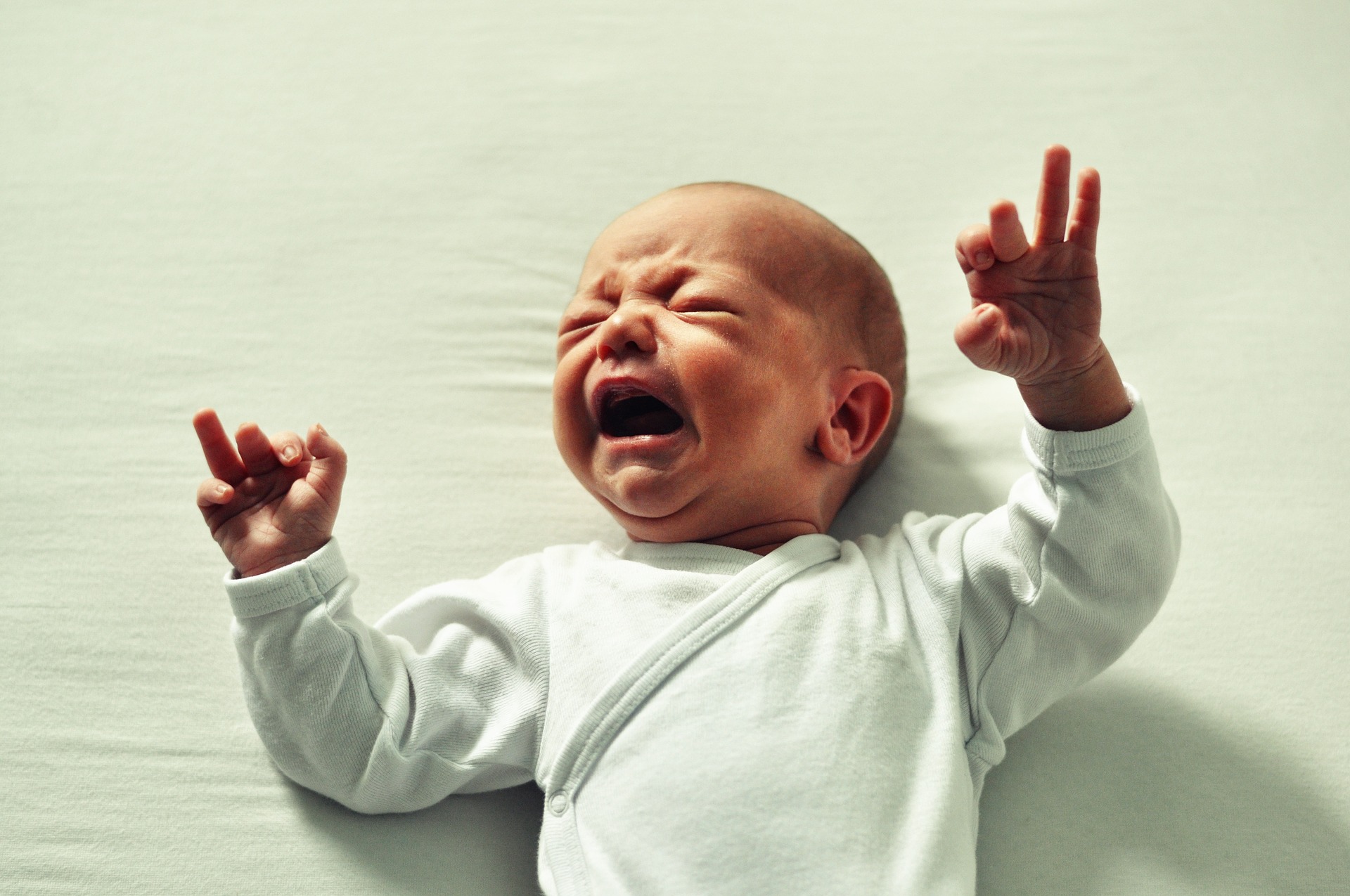Yes – Liz Buckner
Never much of a sleeper, my son Oliver was five months old when my husband and I realized we had to remedy our Walking Dead situation. We were barely surviving on three hours of sleep a night and Oliver was downright miserable, constantly irritable and forever rubbing his eyes.
Our first attempt to woo him to dreamland was co-sleeping, but since his dad and I are both light snoozers who flip-flop throughout the night, it was a no go. We repeatedly tried rocking and gingerly laying him in his crib, but his eyes popped open the minute our hands left his body. We also set him in his crib and rubbed his head, assuring him we were there and loved him. It seemed the more we tried to cajole him to sleep, the more resistant he became.
When he was six months old, all of us bleary-eyed with exhaustion, a friend gave me the book Healthy Sleep Habits, Happy Child. It laid out how to get any baby to sleep and how to get Baby to doze off on his own. We were hopeful for the first time in months.
I'll be honest: Putting the cry-it-out method into action was pretty horrible, but my husband and I agreed we would leave Oliver in his crib (with the door cracked so we could make sure he was OK) for at least 20 minutes. To our shock and relief, he cried for 15 minutes before sleeping for SIX HOURS straight that night–the longest stretch he'd ever logged! The next evening was similar, as were the days that followed. By the middle of week two he wasn't crying when we laid him down and was sleeping for eight hours or more. We couldn't believe our once inconsolable baby had morphed into a smiling, laughing, happy cherub.
It was hard, and, truthfully, I wouldn't want to do it again, but the results were worth it.
NO – Connie Jeske Crane
As a new mom, I was filled with questions. Yet I was sure about one thing: when my son Zachary cried, I was there. At the time, I'd seen some research indicating babies aren't capable of manipulation, so I assumed Zach’s wailing meant something. And given I had a constitutionally happy baby, Zach’s cries did seem to flag some need—for food, comfort or maybe a whirl in Daddy’s arms.
It was all pretty good until the six-month mark when Zach started teething. Suddenly, night after night, we had 4 a.m. insanity. Most members of my mom group were sleep-training, so naturally I wondered, was there a magic solution here? Yet nothing I heard from these weary women enticed me.
I stayed the course, staggering to Zach’s crib in the night. Was it more work? Maybe. But ultimately Zach was comforted through his teething pain, and the crying lessened. Today, at age 11, he still sleeps well. Research on crying and sleep is conflicting. While some detractors, like renowned parenting expert Penelope Leach, term prolonged crying stressful for infants, proponents like Dr. Richard Ferber have tried to clarify cry-it-out methods, saying they’re often misinterpreted.
More compellingly though, some new researchers are talking less about methods and more about parents’ emotional availability. In a two-year study of 156 families, Penn State researcher Doug Teti found that, methods aside, “when parents are responsive and sensitive and warm, babies tend to sleep a lot better through the night.” Dr. Teti has also said responding to prolonged distress (crying of more than a minute), is “always better than not—in terms of promoting sleep over the long term”.
I don't think a bit of crying is the end of the world. But in my experience, a little work upfront reassuring your baby on those dark lonely nights, is the best way to ensure everyone a good night’s sleep—eventually.
Dr. Paul roumeliotis, aka ‘the internet doctor’ and author of Baby Comes home: A parent’s guide to a healthy and well first eighteen months, weighs in:
When I talk to parents about coping with a crying baby's prolonged crying episodes that tend to occur in the evening or late afternoon, I recommend that parents respond to a crying baby. When a baby is put to bed for night-time sleep, we can take a slightly different approach so that baby can learn to go to sleep on her own. If she initially cries or fusses upon being put to bed for the night, I think it is fine to let her alone for a few minutes as long as the crying is decreasing and she eventually falls asleep. If, however, after a few minutes, and I mean only just a few minutes, the crying continues or intensifies, parents need to respond. I do not believe in the sleep training method of letting them cry it out for as long as necessary to fall asleep.
Although crying is not usually a cause for alarm, it can be stressful for parents, caregivers and the baby. Keeping baby’s environment peaceful and calm, particularly around feeding time and in the late afternoon and evening, may help prevent or minimize crying episodes.
When your baby does cry, be sure to respond. Don’t just let baby cry. Babies who are left to cry may begin to feel abandoned and insecure, and are often harder to calm. They need TLC for their brain to develop normally, so don't worry – babies can't be spoiled at this age! Based on what science tells us today, babies who are given a lot of attention in the first few months tend to be happier, healthier, and better adjusted in the long run.
Strategies to calm a crying baby:
- Wrap your baby snugly in a blanket. Many babies find this soothing. Avoid swaddling, as it can be harmful to baby if not done properly. It is not recommended past two months of age.
- Gently pick your baby up and rock her in your arms.
- Singing softly or gently massaging their tummy or back seems to soothe many babies.
- Babies love gentle rhythmic motion. Go for a walk outdoors together using a stroller, baby carrier, or just your arms – it may calm your baby while providing some much needed stress relief for you too! Or if you prefer, strap your baby into the car seat for a ride in the car; this may help calm or lull him or her to sleep.
– Excerpted and adapted from Baby Comes Home (Influence Publishing, 2014). For more information, go to drpaul.com.
Originally published in ParentsCanada magazine, July/August 2015. Photo by Marco Albuquerque.










